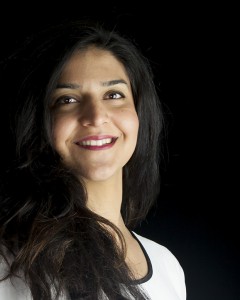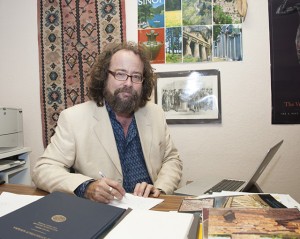![]()
The California State University, Northridge community celebrated the service and accomplishments of more than 100 of its exemplary faculty May 23 at the annual Honored Faculty Reception at the University Student Union Grand Salon.
CSUN President Dianne F. Harrison, Yi Li, provost and vice president of academic affairs, and Adam Swenson, faculty president, were among the campus leaders who welcomed those in attendance.
“It is always an exhilarating time of the year, and I enjoy spending time with faculty who have devoted their lives to educating and mentoring the students we serve, especially those who are graduating this week,” said Harrison during her opening remarks. “I appreciate you setting high expectations for our students, and for providing support and encouragement so that they can succeed and persist. You are the true heart of the campus and the reason CSUN is respected locally, nationally and globally.”
Faculty members recognized for their exemplary achievements include:
Outstanding Faculty Awards:
Wendy Murawski (Special Education) and Jill Razani (Psychology) were both honored with the Outstanding Faculty Award.
Throughout Murawski’s 18-year tenure in the Michael D. Eisner College of Education, her contributions as researcher, educator and leader in the field of mild to moderate disabilities and special education make her worthy of this award.
She mentors students long after they graduate, evidenced by her inclusion in publications and presentations in peer-reviewed journals and conferences. This practice reflects her dedication to researching and promoting co-teaching teams. She co-authored the seminal meta-analysis paper on co-teaching and co-founded the Co-teaching Solutions System, an online software program to support data collection and analysis. She is the sole author of two books, first author of two co-authored books and first editor on two co-edited texts. Three of these books are bestsellers with Corwin Press. Her courses in CSUN’s clear administrative services credential and master’s degree programs in special education are model examples of how to address student differentiation.
She is a highly respected presenter with almost 400 presentations; keynote speeches at state, national and international conferences; and she has served on multiple speaker bureaus, including the prestigious Bureau of Education and Research. She is an international professional development trainer and served as president of the National Teacher Education Division and Council for Exceptional Children. As the Eisner Endowed Chair and executive director for the Center for Teaching and Learning at CSUN, Murawski has changed the culture of education at CSUN.
For the past 15 years, Razani, faculty member chair for the Department of Psychology, has demonstrated excellence in teaching, scholarship and service.
She is a powerful mentor guiding students from disadvantaged and underprivileged groups through programs such as Minority Access to Research Careers, BUILD PODER, Research Infrastructure in Minority Institutions, Career Opportunities for Research, and Minority Biomedical Research Support Research Initiative. She has helped underprivileged students pursue doctoral programs, sponsored 67 student research presentations and co-authored journal articles with more than 20 students. She has received more than $1.7 million in National Institutes of Health grants and is a prolific researcher in the field of clinical neuropsychology.
Razani has published more than 25 peer-reviewed articles, 86 conference presentations, one reference text and four book chapters. She is co-author of the seminal reference text, Handbook of Normative Data for Neuropsychological Assessment, 2nd Edition. This textbook helps researchers and clinicians identify normative data for patient populations, and underrepresented populations from racial/ethnic minority backgrounds.
As an educator, she supervises clinical Master of Arts students, providing evidence-based treatments for anxiety and mood disorders at the on-campus Mood and Anxiety Disorders Clinic. Beyond chairing the largest department on the CSUN campus, Razani continues to teach courses in statistical methods in psychological research, serves as a principal investigator in neuropsychology and mentors junior faculty in her department.
The Distinguished Teaching, Counseling or Librarianship Award went to: Soheil Boroushaki (Geography), John Paul Nuño (History) and Mark Otten (Psychology).
Boroushaki has served in the Department of Geography at CSUN since 2011. He has expertise in Geographic Information Systems, which enables us to more easily see, analyze and understand patterns, relationships and trends. He also has expertise in urban and regional planning and spatial statistical analysis. Boroushaki has an impressive publication record and actively involves students in his research. From 2013-15, he led a very timely and important National Science Foundation project at CSUN: Coping with Change: Water Availability and Arid Land Management.
Boroushaki’s goal has been to establish a “fearless classroom,” in the sense that students can and do engage, as evidenced by his many glowing student and colleague letters of support. Students describe him as a professor with very high standards who is challenging, yet welcoming, inspirational — “a diamond.” They also describe him as energizing, dynamic and motivational. One colleague wrote that Boroushaki is a “supernova presence” in the classroom and the lab.
Nuño received his doctorate from the University of Texas at El Paso, where he began focusing his research on the development of race and identity in Florida borderlands during the turn of the 19th century. He has served in the Department of History at CSUN since 2011, and he has expanded his research to include the Mexican borderlands. His scholarship and promise as an emerging scholar have been acknowledged nationally. He received the prestigious National Endowment for the Humanities Summer Seminar Research Fellowship with the American Indian Center at UNC Chapel Hill. Nuño’s participation in the 2015 CSU Chancellor’s Office Course Redesign Initiative indicates his commitment to teaching.
Students praise Nuño for creating “an inclusive classroom environment.” At CSUN, he teaches a wide variety of undergraduate and graduate courses. Even in the large classes, students and colleagues applaud him for outstanding teaching and great mentorship, and they cite his excellent communication and organizational skills.
Nuño has served as GE Paths Student Association faculty adviser, Social Justice Path coordinator, and as part of a learning community to improve Hispanic and Latina/o student success. This important service and active research agenda have established Nuño as a dynamic resource for effective student development.
Otten has worked in the Department of Psychology at CSUN since 2004. He first came to the department as a lecturer, and after earning his doctorate in psychology from UCLA, became a tenure-track faculty member in 2007. He has an impressive record of research and publications, and he actively involves his students in both.
Otten is described as a true “teacher-scholar” and an exceptional educator. His department chair said Otten has a wonderful way of making complex statistical material “so tangible for students who fear math.” He teaches with high standards, humor and caring. Staff and colleagues call Otten a “true gem,” and students praise him for his commitment to student success.
Otten’s research examines a wide breadth of topics, including sports psychology, diversity and women’s issues, and parenting. While at CSUN, he has co-chaired the general experimental psychology master’s degree program, and he is actively involved in the mentoring program for master’s degree students.
This year’s award for Extraordinary Service, for Scholarly Publications and for Creative Accomplishments was presented to Charles Hanson (Educational Psychology and Counseling).
Hanson was chosen for this award because of his outstanding contributions to the university, its students and the community at large. Embodying core CSUN values, Hanson has led efforts to merge the academic and professional preparation of students with unparalleled community service.
As founder and executive administrator of Strength United, Hanson’s dedication to social justice extends beyond CSUN. Strength United serves as an off-campus training site for more than 300 trainees in the marriage and family therapy program and for more than 100 Master of Social Work students. Under his leadership, 5,000 victims of sexual and domestic violence and 400 families of children at risk for maltreatment have received counseling, crisis intervention, case management and support. He has secured more than $27 million to fund these services.
He has been the coordinator of the school counseling program in his department since 1981. In this role, he has significantly increased the diversity of candidates and transformed the curriculum. He was instrumental in the writing of new state standards for pupil personnel services. These standards, which guide preparation programs statewide, reflect his commitment to educational equity for students of color and low-income.
He is a creative, resourceful and compassionate individual who places service as his highest priority. His department chair, Shari Tarver Behring, said, “I can think of no one more deserving of the CSUN Extraordinary Service Award than Dr. Charles Hanson.”
The recipient of this year’s Preeminent Scholarly Publications Award was Takashi Yagisawa (Philosophy).
Yagisawa has taught at CSUN since 1987. He is a prolific scholar of metaphysics, the philosophy of language and the philosophy of the mind. He has published extensively in these areas, including a groundbreaking book, Worlds and Individuals, Possible and Otherwise with Oxford University Press, which is by far the best academic press for philosophy.
He also has published many papers in his area of expertise in some of the most prestigious journals of philosophy.
Yagisawa’s body of work on the metaphysics of necessity, possibility and actuality can be seen as a defense of modal realism, according to which non-actual possible worlds and individuals are as real as the actual world and individuals. A colleague from his department said, “Dr. Yagisawa’s version of modal realism is contrasted with a competing and more popular version, according to which both the actual and non-actual worlds exist.
“Dr. Yagisawa argues … that modal realism should be a position that affirms the most fundamental status of the non-actual in metaphysics, and that fundamental status is reality rather than existence,” his colleague said.
Yagisawa has presented his work in diverse venues in the United States, South Korea, Slovakia, Mexico, Japan and China, and to at least 17 different audiences. He also has published in Japanese.
The Exceptional Creative Accomplishments Award was given to Alexis Krasilovsky (Cinema and Television Arts) for her extraordinary work in the field of documentary filmmaking. For this particular award, Krasilovsky submitted for the committee’s consideration a documentary film that she wrote, directed and co-produced titled, Let Them Eat Cake. The film explores the contrast between pastry making and consumption in 12 different countries, juxtaposing the lavish traditions of pastry making with the reality that those who farm the ingredients for pastries can’t afford to buy them.
The film began receiving international critical acclaim shortly after its release. It has been screened at a number of film festivals around the world and has won multiple awards, including the best documentary feature award at the Paris Independent Film Festival and special mention for best editing at the Sole Luna Festival in Italy.
One of her colleagues said, “Let Them Eat Cake is a prime example of what filmmakers and their films are responsible to do … and that is to create with social responsibility.” The film stood out to the selection committee both for what it teaches us about food inequality and for its creative elements. The film draws the viewer in with its grand visuals, interviews, music, editing and poetry.
The Visionary Community Service-Learning Award went to Jongeun Kim (Family and Consumer Sciences).
Kim was selected because of her leadership in community service learning at CSUN through her many service learning courses, engaged curriculum development, and dissemination of her scholarship about service learning. She has provided engaged learning projects to students in several different family and consumer sciences courses. She also has developed and taught interdisciplinary service learning courses by partnering with the Institute for Sustainability minor program.
Kim’s projects have involved a wide variety of organizations addressing different community needs, ranging from preschool children to high school students to the elderly. She and her students have worked with students at Monroe, Northridge Academy and Sylmar high schools to develop fashion products and assess viable target markets. One of her students noted that through her courses and service learning projects, she has “challenged us to think of the ways that the apparel business can benefit and change the lives of individuals living in under-resourced communities.”
Another student said, “College students aren’t only teaching the high school students, they are also learning from them, because it gives a different perspective … it also encourages high school students to enroll [in] higher education.”
Finally, she has disseminated her scholarship in community service learning in the apparel and family consumer science fields through her publications and presentations.
The university also recognized faculty who reached milestones of 25, 30, 35, 45 and 55 years of service — as well as those granted emeritus status.
Those granted emeritus status:
Jack Alanen Computer ScienceRobert Barker Accounting and Information Systems
Robert Barker Accounting and Information Systems
Julio Blanco Physics and Astronomy
Donald Bleich* Finance, Financial Planning and Insurance
Pam Bourgeois English
Brian Connett Marketing
Amy Denissen* Sociology
Cynthia Desrochers Elementary Education
Bonnie Ericson Secondary Education
Craig Finney Recreation and Tourism Management
Ronald Fischbach Health Sciences
Shane Frehlich* Kinesiology
Adam Gifford Economics
Charles Hanson Educational Psychology and Counseling
Martha Highfield Nursing
Doris Jones-Nicol Educational Psychology and Counseling
Magnhild Lien Mathematics
Jennifer Matos Biology
Joyce Munsch Child and Adolescent Development
Steven Oppenheimer Biology
Sabrina Peck Linguistics/TESL
Ken Portnoy Cinema and Television Arts
Jennifer Romack* Kinesiology
Luis Rubalcava Educational Psychology and Counseling
Jerome Seliger Health Sciences
Bruce Shapiro University Counseling Services
Jon Sloan Geological Sciences
George Uba English
Earl Weiss Accounting and Information Systems
*posthumous
For more information visit the Honored Faculty Awards website.

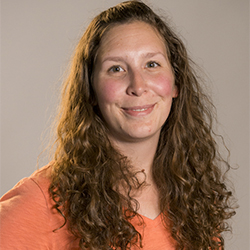
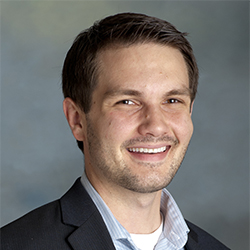
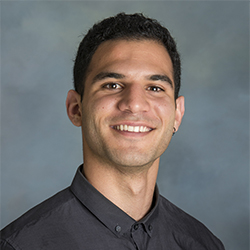
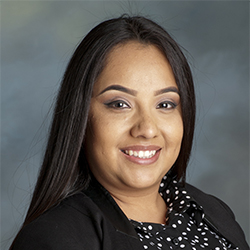
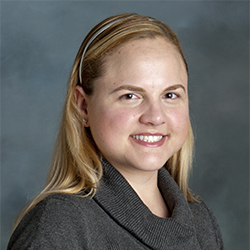

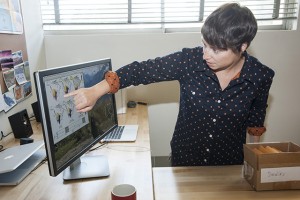
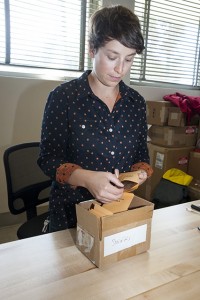



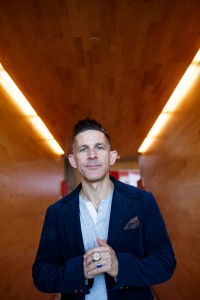
 Pousson was awarded a fellowship from the National Endowment for the Arts in 2014 for a collection of interlocking short stories that chronicled the sexual coming of age of a young, mixed-race man in the bayous of Louisiana. The fellowship helped Pousson turn that collection into what is now “Black Sheep Boy.”
Pousson was awarded a fellowship from the National Endowment for the Arts in 2014 for a collection of interlocking short stories that chronicled the sexual coming of age of a young, mixed-race man in the bayous of Louisiana. The fellowship helped Pousson turn that collection into what is now “Black Sheep Boy.”


